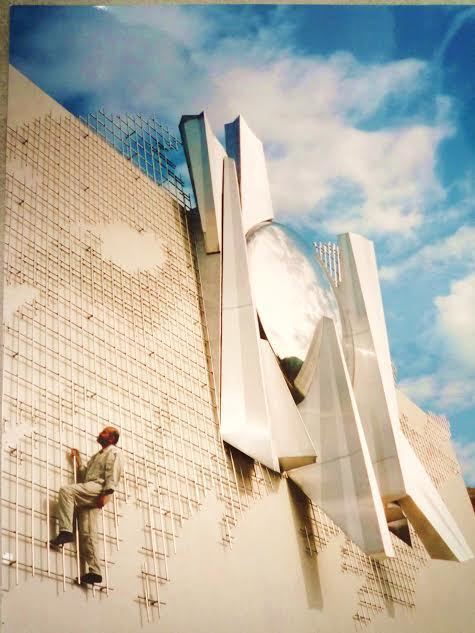Nationality French | Name Jean-Yves Lechevallier | |
 | ||
Known for Painting, drawing, sculpture | ||
Jean-Yves Lechevallier, [ ʒɑ̃ iv ləʃəvæljeɪ ] born in 1946 in Rouen, Normandy, is a French sculptor painter, and laureate of the Flame of Europe art competition organized by the Robert Schuman association for Europe in 1977 to commemorate the 20th anniversary of the Rome treaties.
Contents
Biography
Jean Yves Lechevallier grew up surrounded by blueprints, sketches and models, as his father was an architect.
His first known carving was of a stone brought back from a holiday trip to Les Baux-de-Provence. A few years later, he held his first solo exhibition in 1961 at age 15, a showing of hand carved animal sculptures (Provençal Stone) at the Prigent Gallery in Rouen.
In 1966, at age 20, he got his first commission from a family friend and urban architect (Robert Louard) who was in charge of new construction on an island in Rouen.
He graduated from the Regional School of Fine Arts in Rouen and the ENSAD, Higher School of Visual arts and Design in Paris. His first job was as a scale model builder/creator for the architect Badini.
Artistic Work
Jean Yves Lechevallier is influenced by the thoughts of sculptor and poet Jean Arp, especially his Nature in Sculpture and Sculpture in Nature.
His work is rather diverse in terms of materials, composition, and style: he creates low reliefs, high reliefs, murals, mosaïcs, caryatids and monumental pieces. His preferred materials are: exotic woods, stone and marble; metals such as copper, aluminium, bronze or stainless steel; polyester and concrete, sometimes reinforced with fiber inclusion. In fact, his particularities motivated a cement manufacturer to create a special mixture called cridofibre which is a registered trademark today.
Beginning in the post-WWII reconstruction years, thanks to culture-promoting politics and subsidized support for the arts in France, Lechevallier's work was commissioned by both municipal government and the French State.
These works are part of the architectural landscape today in many cities throughout France, mainly in Normandy, Paris and the Riviera. They can be seen in public gardens, public squares, schools, fire and police stations, institutions of higher education, residential complexes as well as in some preserved natural areas such as La Croix des Gardes forest parkland above the city of Cannes.
Lechevallier specializes in monumental open-air pieces. As Corinne Schuler says in Sentiers de la Sculpture: "By forcing art into confined spaces, you lose so much in terms of its beauty." Two specific examples of this are Point d'orgue and Croix des Gardes:
Another one of Lechevallier's specialties is Fountains, demonstrating how water movement and sound can make a sculpture sing. Among these:
Most Notable Works
More commissioned works exist, being held by private companies and collectors in Germany, France, Monaco, and the US.
Major Shows, Art Fairs and Prizes
A selection:
